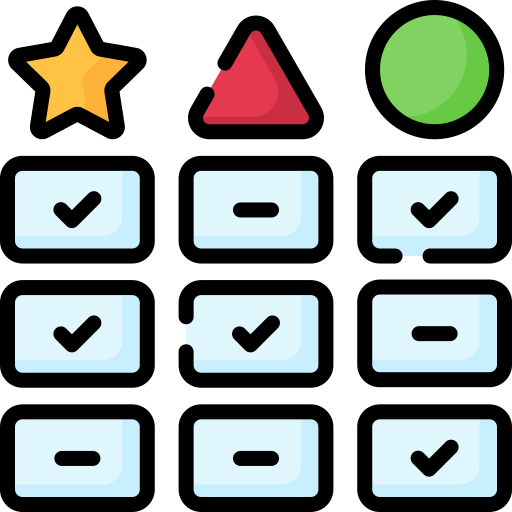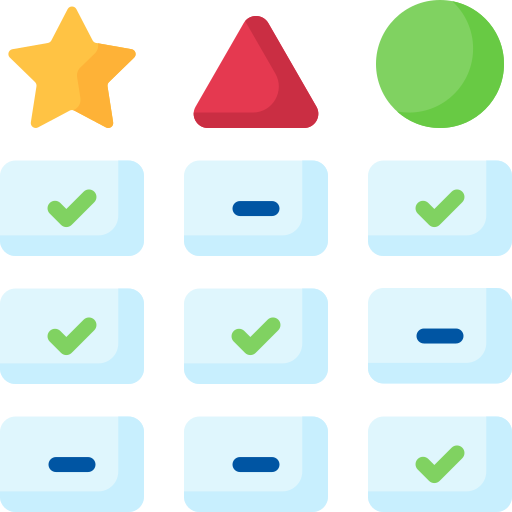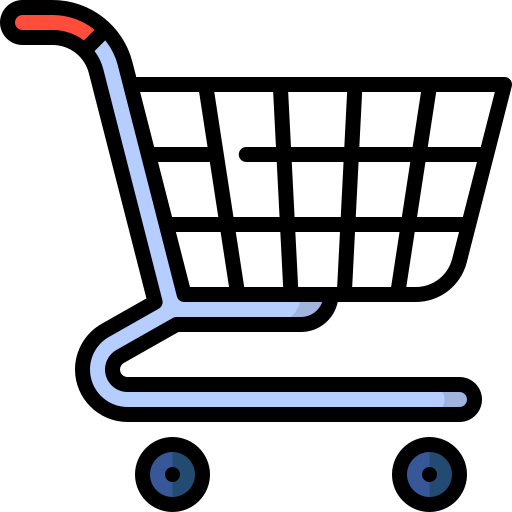
33 Verified Hands-On Reviews
To combat fake reviews we only accept video reviews from verified channels. Each review must show the product and the face of the reviewer.
Expert reviews [33]
- with a score: 17
- without a score: 16
| Highest score by TechRadar |
100
|
| Average score based on 33 reviews |
89
|
| Lowest score by Space Exploration and Astronomy |
80
|
Score distribution:
| 80-100 |
|
| 60-80 |
|
| 40-60 |
|
| 20-40 |
|
| 0-20 |
|




Expert consensus
The DJI Mavic Air 2 is highly praised for its camera quality, video capabilities, flight time, range and signal strength, obstacle avoidance, and portability, making it a top choice for both professionals and recreational users.
The DJI Mavic Air 2 has received highly positive reviews from experts, particularly for its camera quality, video capabilities, flight time, range and signal strength, obstacle avoidance, and portability. The camera quality is praised for its 48-megapixel resolution and 1/2-inch sensor size, which enhance image quality and low-light performance.
The image stabilization capabilities are described as excellent, providing rock-steady footage even in windy conditions. The video capabilities are impressive, with 4K resolution at 60 fps, various frame rates, and a long video transmission range of up to 10 kilometers.
The flight time of up to 34 minutes allows for longer and more immersive aerial photography and videography sessions. The range and signal strength are generally strong, although the actual range may vary depending on conditions. The obstacle avoidance system is highly effective and reliable, with sensors in multiple directions and advanced mapping capabilities.
The drone is praised for its portability and ease of transportation, with a compact and foldable design that can fit into a backpack or even be carried in the palm of your hand. Overall, the DJI Mavic Air 2 is highly regarded for its camera quality, video capabilities, flight time, range and signal strength, obstacle avoidance, and portability, making it suitable for professional photographers, videographers, and recreational users alike.
Camera Quality
The DJI Mavic Air 2 is highly praised for its 48-megapixel camera and excellent image stabilization capabilities, making it a top choice for capturing high-quality photos and videos.
The DJI Mavic Air 2 is highly praised by experts for its camera quality. It has a resolution of 48 megapixels, achieved through pixel-binning technology that combines multiple pixels into one to enhance image quality and detail. The camera sensor size is 1/2-inch, which allows for improved image quality and better low-light performance compared to its predecessor.
The image stabilization capabilities of the Mavic Air 2 are described as excellent. It uses a 3-axis gimbal system that provides cinematic quality stabilization, even in windy conditions. The stabilization is praised for being "rock steady" and virtually every video clip filmed with the Mavic Air 2 is usable.
The gimbal reacts well even when taking long exposure photos, resulting in crisp and stabilized images. The stabilization is also commended for smooth video capture and a great articulating range.
Overall, the DJI Mavic Air 2 offers impressive camera quality and image stabilization capabilities. It is suitable for various use cases, such as capturing high-resolution photos with vivid detail, shooting smooth and steady videos, and achieving professional-looking footage. Whether you are a professional photographer or a casual user, the Mavic Air 2's camera quality is highly regarded by experts.
What is the resolution of the camera of the DJI Mavic Air 2?
Based on 14 quotes from 12 sources [show quotes and sources]
What is the sensor size of the camera of the DJI Mavic Air 2?
Based on 16 quotes from 14 sources [show quotes and sources]
What are the image stabilization capabilities of the camera of the DJI Mavic Air 2?
Based on 12 quotes from 8 sources [show quotes and sources]
Is there a gimbal available for the DJI Mavic Air 2?
Based on 4 quotes from 4 sources [show quotes and sources]
Video Capabilities
The DJI Mavic Air 2 has received positive reviews for its impressive video capabilities, including 4K resolution at 60 fps, various frame rates, long video transmission range, FPV feature, and support for high-quality 4K video recording.
The DJI Mavic Air 2 has received positive reviews for its impressive video capabilities. It offers a maximum video resolution of 4K at 60 frames per second (fps), which is twice the resolution of its predecessor, the Mavic Air. This higher resolution allows for stunning and detailed footage.
The Mavic Air 2 also supports various frame rates, including 2. 7K at 60 fps and 1080p at 240 fps, allowing for slow-motion recording and adding creative possibilities to your videos.
The video transmission range of the Mavic Air 2 is up to 10 kilometers (6. 2 miles), thanks to DJI's OcuSync 2. 0 technology. This range is impressive and allows for a reliable and high-quality video transmission between the drone and the remote controller. However, it is important to note that real-world conditions and regulatory restrictions may affect the actual range.
The Mavic Air 2 offers a first person view (FPV) feature, allowing you to see real-time video footage from the drone's camera while flying. This immersive and interactive flying experience can be viewed through the DJI Fly app on your smartphone or tablet, connected to the drone's remote controller.
This FPV feature sets the Mavic Air 2 apart from other consumer drones from DJI.
In terms of 4K video recording, the Mavic Air 2 excels. It supports 4K video recording at 60 fps, as well as 4X and 8X slow-motion video and 1080p video at 240 fps. The use of the H. 265 codec and a bit rate of up to 120 Mbps ensures impressive video quality. Additionally, the Mavic Air 2 supports HDR video at 4K/30fps, providing enhanced dynamic range and color reproduction.
Overall, the DJI Mavic Air 2 is highly praised for its video capabilities, offering high-resolution footage, various frame rates, long video transmission range, FPV feature, and support for 4K video recording with impressive quality. It is suitable for a wide range of use cases, including professional videography, aerial photography, and creative filmmaking.
What is the maximum video resolution of the DJI Mavic Air 2?
Based on 7 quotes from 5 sources [show quotes and sources]
What frame rates are supported by the DJI Mavic Air 2?
Based on 20 quotes from 14 sources [show quotes and sources]
What is the video transmission range of the DJI Mavic Air 2?
Based on 16 quotes from 13 sources [show quotes and sources]
Does the DJI Mavic Air 2 offer first person view?
Based on 3 quotes from 3 sources [show quotes and sources]
Does the DJI Mavic Air 2 support 4K video recording?
Based on 20 quotes from 14 sources [show quotes and sources]
Flight Time
The DJI Mavic Air 2 offers an impressive maximum flight time of up to 34 minutes, allowing for longer and more immersive aerial photography and videography sessions.
The DJI Mavic Air 2 has a maximum flight time of up to 34 minutes, which is a significant improvement from its predecessor. This extended flight time allows for longer and more immersive aerial photography and videography sessions. In typical flight conditions, users can expect a flight time of around 33 minutes, which is still impressive.
Some experts have reported flight times ranging from 30 to 31 minutes, which is on par with the flight time of the higher-end Mavic 2 series.
The longer flight time of the Mavic Air 2 opens up new possibilities for capturing stunning aerial shots and exploring larger areas without the need for frequent battery changes. This makes it an ideal choice for professional photographers and videographers who require extended flight times to capture the perfect shot or footage.
Additionally, the Mavic Air 2's flight time is beneficial for recreational users who want to enjoy longer flights and explore their surroundings from a unique perspective. Whether it's capturing breathtaking landscapes, tracking fast-moving subjects, or simply enjoying the thrill of flying, the extended flight time of the Mavic Air 2 enhances the overall user experience.
It's important to note that flight times can vary depending on factors such as weather conditions, flight mode, and payload. However, the Mavic Air 2's flight time is generally reliable and provides ample time for various use cases.
What is the maximum flight time of the DJI Mavic Air 2?
Based on 15 quotes from 15 sources [show quotes and sources]
How long does it take to recharge the batteries of the DJI Mavic Air 2?
Based on 7 quotes from 7 sources [show quotes and sources]
Are the batteries of the DJI Mavic Air 2 interchangeable?
Based on 2 quotes from 2 sources [show quotes and sources]
Range and Signal Strength
The DJI Mavic Air 2 remote controller offers improved visibility and control with a smartphone mount, programmable buttons, and a display showing important data, while the drone itself provides a strong signal strength and a maximum control range of 10 kilometers, although real-world range may vary.
The DJI Mavic Air 2 remote controller offers a new design with a smartphone mount for better visibility and control. It has a toggle slider and mode switch for easy switching between flight modes. The remote also provides basic camera controls and programmable buttons for customization. The display on the smartphone screen shows important data such as battery life, flight time, signal strength, and more.
The maximum control range of the DJI Mavic Air 2 is stated to be 10 kilometers (6. 2 miles), although real-world range may vary. Some reviewers have reported that the range is often more than half of the stated distance but well out of the operator's sight range. Others have experienced signal cutouts at distances shorter than the stated range.
Overall, the Mavic Air 2 offers a significant control range, but it's important to consider specific conditions and limitations.
The signal strength of the DJI Mavic Air 2 is generally considered to be strong. It uses OcuSync 2. 0 technology to communicate with the controller, switching between 2. 4GHz and 5. 8GHz frequencies. While some reviewers have experienced signal cutouts in certain environments, others have found the signal to be reliable even in areas with electromagnetic interference.
The Mavic Air 2 is praised for its strong connectivity, surpassing lower-cost models like the Mavic Mini.
The DJI Mavic Air 2 comes with GPS and GLONASS, allowing for precise flying, hovering, and return to home functions. The dual satellite system enhances the drone's performance and stability.
Factors that can affect the control range and signal strength include interference, frequency and transmission technology, environment and flying conditions, line of sight, and regulatory restrictions. Open areas with minimal obstacles tend to provide better signal performance, and maintaining a clear line of sight is crucial.
Adhering to regulatory restrictions is important for safety and legal compliance.
Overall, the DJI Mavic Air 2 offers a reliable and stable long-range performance, although the actual range may be somewhat shorter than the advertised maximum distance. It is suitable for various use cases, including aerial photography, videography, and recreational flying.
What are the remote control options of the _ENTITY?
Based on 15 quotes from 11 sources [show quotes and sources]
What is the maximum control range of the DJI Mavic Air 2?
Based on 10 quotes from 8 sources [show quotes and sources]
What do the experts say about the signal strength of the DJI Mavic Air 2?
Based on 4 quotes from 4 sources [show quotes and sources]
Does the DJI Mavic Air 2 come with GPS?
Based on 4 quotes from 4 sources [show quotes and sources]
What factors can affect the control range and signal strength of the DJI Mavic Air 2?
Based on 7 quotes from 6 sources [show quotes and sources]
Obstacle Avoidance
The DJI Mavic Air 2 is highly praised for its obstacle avoidance capabilities, with its Advanced Pilot Assistance System (APAS) 3.0 technology and multiple sensors ensuring safe flight and effective collision avoidance.
The DJI Mavic Air 2 is highly praised for its obstacle avoidance capabilities, according to expert reviews. The drone is equipped with obstacle avoidance sensors on the front, rear, and bottom, including dual vision sensors in each direction. These sensors, along with an auxiliary light on the bottom, help detect obstacles and ensure safe flight.
The obstacle avoidance system on the Mavic Air 2 is considered highly effective and has a good range. It uses DJI's Advanced Pilot Assistance System (APAS) 3. 0 technology, which includes vision sensors, time-of-flight (ToF) sensors, and advanced mapping capabilities. The system can detect obstacles in various directions and automatically adjust the drone's course to avoid them.
It is particularly effective in complex environments, such as flying around trees in narrow spaces.
Reviewers have found the obstacle avoidance system to be responsive and reliable. It can detect and avoid objects like trees, buildings, and even people. The system has been tested by intentionally flying the drone close to obstacles, and it was able to navigate around them without any collision.
While the exact range of the obstacle avoidance system is not specified, it is mentioned that it works well in different flight modes and provides comfort and reassurance for both beginners and experienced users. However, it is important to note that the obstacle avoidance system is not fail-proof, and caution should always be exercised during flight.
Overall, the DJI Mavic Air 2 is considered to have one of the best obstacle avoidance systems in its class. It provides effective collision avoidance capabilities and enhances the safety and ease of use for the drone.
What obstacle avoidance sensors are included in the DJI Mavic Air 2?
Based on 20 quotes from 13 sources [show quotes and sources]
What is the range and effectiveness of the obstacle avoidance system on the DJI Mavic Air 2?
Based on 13 quotes from 10 sources [show quotes and sources]
Does the DJI Mavic Air 2 have the ability to detect and avoid obstacles in all directions?
Based on 18 quotes from 12 sources [show quotes and sources]
Portability
The DJI Mavic Air 2 is highly praised for its compact and foldable design, making it incredibly portable and easy to transport.
The DJI Mavic Air 2 is highly praised for its portability and ease of transportation. It has a compact and foldable design, making it easy to carry and store. The drone weighs only 570 grams or 1. 25 pounds, making it lightweight and portable. It can easily fit into a backpack, purse, or camera bag, and some reviewers even compare its size to that of a water bottle or a medium-sized telephoto lens.
Despite being slightly larger than its predecessor, the Mavic Air, it still maintains its portability and can be comfortably carried in the palm of your hand. DJI also offers a separate carrying case for those who prefer additional protection during transportation. Overall, the Mavic Air 2 is designed with portability in mind, making it convenient to transport between shooting locations or take on your next holiday or road trip.
What are the dimensions and weight of the DJI Mavic Air 2?
Based on 17 quotes from 14 sources [show quotes and sources]
How easy is it to transport the DJI Mavic Air 2?
Based on 10 quotes from 8 sources [show quotes and sources]
Does the DJI Mavic Air 2 come with a carrying case or bag for easy transportation?
Based on 4 quotes from 4 sources [show quotes and sources]

Position in ranking
We maintain a monthly ranking that sums up expert recommendations for all video drones.
| Rank | Change | Price | Video Drone |
CNET
|
T3
|
Digital Camera World
|
BestReviews
|
WIRED
|
PCMag
|
Man of Many
|
Wirecutter
|
TechRadar
|
Tom's Guide
|
|---|---|---|---|---|---|---|---|---|---|---|---|---|---|
|
1
|
- | $1400 |
 DJI Mini 4 Pro
DJI Mini 4 Pro
The DJI Mini 4 Pro is a compact drone that offers exceptional camera quality, impressive video capabilities, a long flight time, a reliable signal connection, effective obstacle avoidance, and excellent portability, making it a recommended choice for those looking for a compact drone with advanced features.
|
-
|
1
|
1
|
-
|
4
|
1
|
2
|
-
|
1
|
2
|
|
2
|
- | $2199 |
 DJI Mavic 3 Pro
DJI Mavic 3 Pro
The DJI Mavic 3 Pro is a highly praised drone that offers excellent camera quality, impressive video capabilities, extended flight time, strong range and signal strength, advanced obstacle avoidance, and portability, making it a powerful and versatile tool for professional photography and videography.
|
-
|
5
|
5
|
3
|
5
|
3
|
-
|
2
|
3
|
-
|
|
3
|
- | $1099 |
 DJI Air 3
DJI Air 3
The DJI Air 3 is a highly regarded drone that offers exceptional camera quality, video capabilities, flight time, range and signal strength, obstacle avoidance, and portability, making it suitable for professional photographers and videographers.
|
-
|
-
|
2
|
-
|
1
|
2
|
-
|
1
|
-
|
-
|
|
4
|
+7 | Check price |
 DJI Air 3S
DJI Air 3S
|
-
|
-
|
-
|
-
|
-
|
-
|
1
|
-
|
4
|
1
|
|
5
|
-1 | Check price |
 Autel Evo Lite Plus
Autel Evo Lite Plus
The Autel Evo Lite Plus is a highly praised drone that offers impressive camera quality, video capabilities, flight time, range and signal strength, obstacle avoidance, and portability, making it suitable for professional-grade aerial photography and videography, as well as for travel and outdoor activities.
|
-
|
-
|
6
|
-
|
6
|
5
|
-
|
5
|
5
|
-
|
|
6
|
+1 | $1199 |
 DJI Avata 2
DJI Avata 2
|
-
|
4
|
-
|
-
|
-
|
8
|
5
|
4
|
8
|
-
|
|
7
|
+3 | $1799 |
 DJI Mavic 3 Classic
DJI Mavic 3 Classic
The DJI Mavic 3 Classic is a highly praised drone that offers excellent camera quality, impressive video capabilities, a long flight time, advanced obstacle avoidance, and portability, making it a top choice for professional videographers and photographers.
|
-
|
2
|
10
|
-
|
-
|
-
|
3
|
-
|
-
|
3
|
|
8
|
-3 | $314 |
 DJI Mini 2 SE
DJI Mini 2 SE
|
-
|
-
|
9
|
1
|
-
|
-
|
-
|
-
|
2
|
-
|
|
9
|
-3 | $419 |
 DJI Mini 3
DJI Mini 3
The DJI Mini 3 is a compact and lightweight drone with excellent camera quality and advanced stabilization features, making it ideal for adventurers and travelers who want to capture stunning aerial footage on the go.
|
-
|
-
|
4
|
-
|
-
|
4
|
-
|
3
|
-
|
4
|
|
10
|
+3 | $199 |
 DJI Neo
DJI Neo
|
-
|
-
|
-
|
-
|
-
|
7
|
4
|
-
|
11
|
5
|
|
11
|
-3 | Check price |
 Autel Evo Nano Plus
Autel Evo Nano Plus
The Autel Evo Nano Plus is a highly praised drone that offers a high-quality camera experience, impressive video capabilities, reliable flight performance, comprehensive obstacle avoidance, and excellent portability.
|
-
|
6
|
-
|
-
|
-
|
6
|
-
|
-
|
9
|
9
|
|
12
|
-3 | $399 |
 HoverAir X1
HoverAir X1
|
-
|
3
|
3
|
-
|
-
|
-
|
-
|
-
|
-
|
6
|
|
14
|
+2 | $2199 |
 DJI Mavic 3
DJI Mavic 3
The DJI Mavic 3 is a highly praised drone that offers exceptional camera quality, impressive video capabilities, an extended flight time, strong range and signal strength, effective obstacle avoidance, and excellent portability, making it suitable for a wide range of professional applications.
|
3
|
-
|
-
|
-
|
-
|
-
|
-
|
-
|
6
|
-
|
|
15
|
+2 | Check price |
 Dji Avata
Dji Avata
The DJI Avata drone is highly praised for its camera quality, video capabilities, and portability, making it a top choice for professional photographers and videographers.
|
2
|
-
|
-
|
-
|
-
|
-
|
-
|
-
|
-
|
8
|
|
16
|
+2 | Check price |
 DJI Mini 2
DJI Mini 2
The DJI Mini 2 is a highly recommended drone for capturing high-quality photos and videos, offering impressive camera quality, stable footage, long transmission range, and a compact and portable design.
|
7
|
-
|
-
|
-
|
3
|
-
|
-
|
-
|
-
|
-
|
|
17
|
+2 | $1336 |
 DJI FPV
DJI FPV
The DJI FPV drone is highly praised for its camera quality, video capabilities, flight time, range and signal strength, obstacle avoidance, and portability, making it a versatile and powerful tool for capturing stunning aerial footage.
|
4
|
-
|
-
|
-
|
-
|
-
|
-
|
-
|
-
|
7
|
|
18
|
+2 | $884 |
 DJI Air 2S
DJI Air 2S
The DJI Air 2S is a highly recommended drone for its exceptional camera quality, impressive video capabilities, reliable flight performance, and convenient portability.
|
6
|
7
|
-
|
-
|
-
|
-
|
-
|
-
|
-
|
-
|
|
19
|
-7 | Check price |
 Dji Ryze Tello
Dji Ryze Tello
The DJI Ryze Tello is a beginner-friendly drone with good camera quality and portability, making it suitable for casual photography and videography, but may not meet the needs of professional or advanced users.
|
-
|
-
|
-
|
-
|
7
|
-
|
-
|
-
|
7
|
-
|
| Show all rows | |||||||||||||







